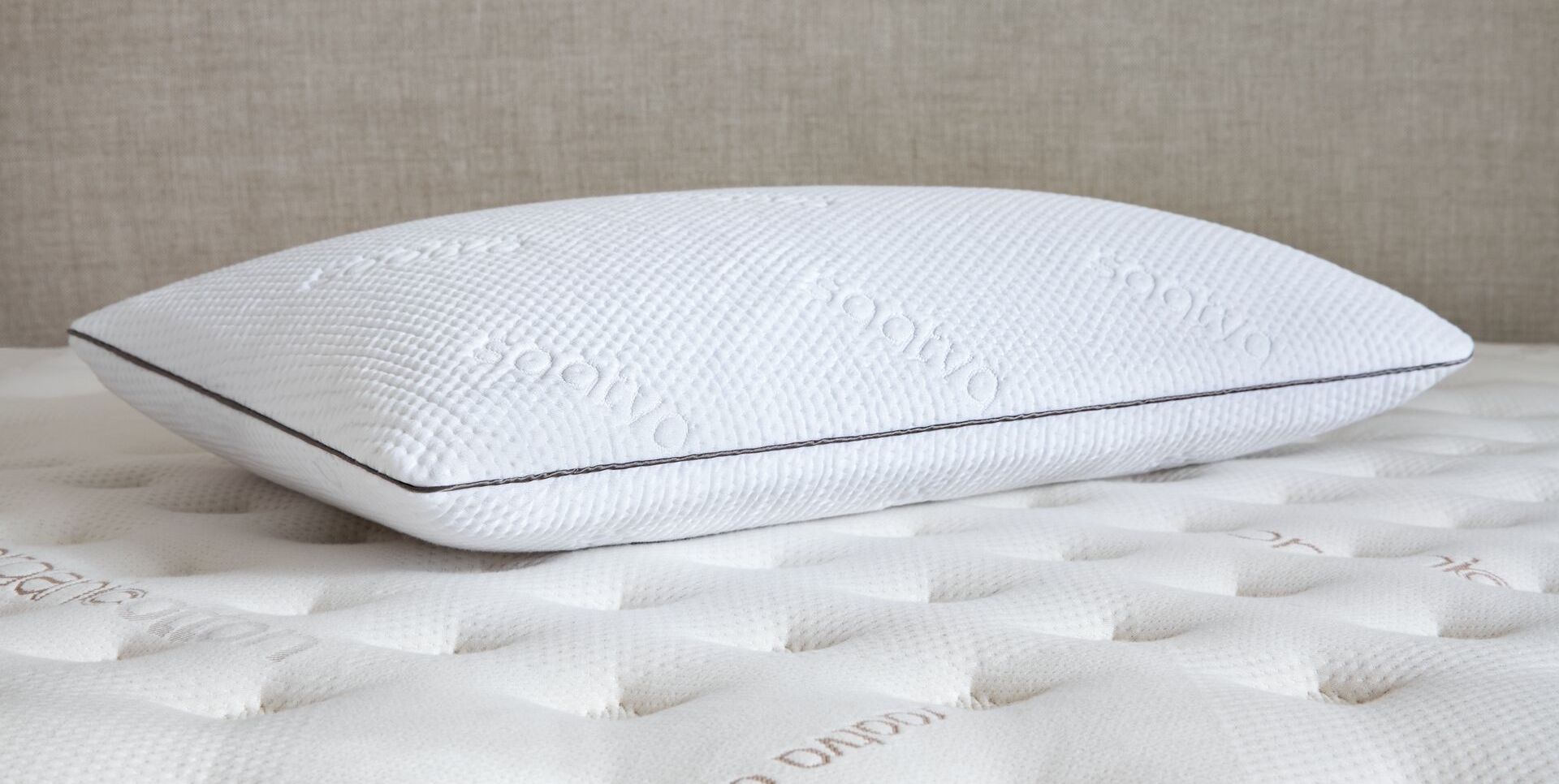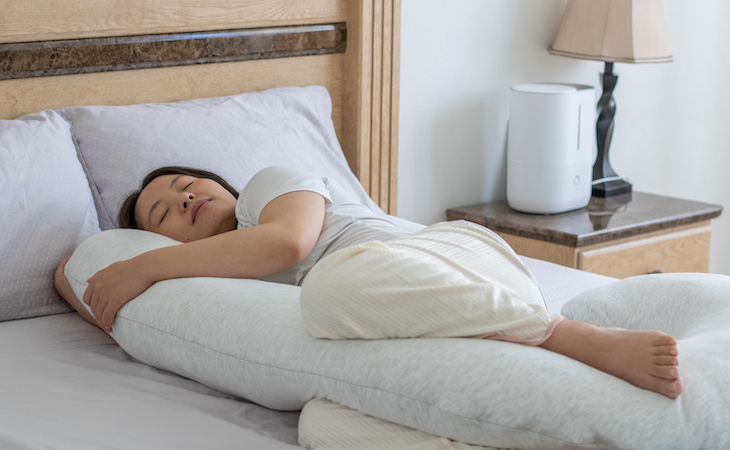The wrong pillow can wreck your sleep. It can make headaches worse, increase neck and shoulder tension, and have you waking up feeling like you’ve spent hours wrestling a nightmare monster. Knowing how to choose a pillow—the right pillow—on the other hand, can set you on the path to pleasant dreams and leave you refreshed and ready to greet the day.
Let’s explore some of the key considerations you should make before buying a new pillow, including pillow filling, size, sleep style, and more.
The importance of choosing the right pillow filling
Pillows today come with many different fillings on the inside that can determine their overall feel, comfort level, and firmness.
Different types of pillows will have individual benefits that may steer you to one type of material over another. The most common pillow fillings on the market include:
- Down or feathers: These pillows are filled with the soft inner feathers of geese or ducks. Down is very light and offers little support, while feathers are usually harder and may even poke through the fabric of the pillow cover. If you suffer from allergies frequently, it may be better to avoid both down pillows and feather pillows.
- Latex: Made from the sap of rubber trees, natural latex is hypoallergenic and resistant to dust mites and mildew. Latex is responsive and provides contouring support that conforms to your head and neck. It also tends to be a more breathable material than memory foam or down, giving you better temperature regulation at night.
- Memory foam: Made from polyurethane, memory foam pillows provide good support, especially if you have neck, jaw, or shoulder problems. Although memory foam conforms well to your head and neck, the material doesn’t “breathe” and can make you feel hot. Memory foam can also take time to re-mold into different shapes if you move around a lot in your sleep.
- Synthetic fill: A down alternative, synthetic fill is usually made from polyester material and is hypoallergenic and machine washable.
- Wool or cotton: Natural wool and organic cotton are good options if you suffer from severe allergies, as these materials aren’t susceptible to dust mites or mold. But they’re typically quite firm and don’t compress well.
Gusseted vs. regular pillows
Gusseted pillows are also an option to consider when buying new pillows. But what exactly are they—and what do they do?
Gusseted pillows are pillows with an extra piece of fabric, called a gusset, that expands and gives the pillow additional structure. These pillows have more shape and a higher loft compared to a regular pillow. They also offer support to your head and neck throughout the night.
Because of the additional support, gusseted pillows may help reduce back pain during the night. A gusseted pillow is a great option for all sleep styles: back sleepers, side sleepers, and stomach sleepers alike.
Other considerations to make before purchasing a pillow
Before purchasing a pillow, you’ll need to consider much more than just your pillow’s fill. At the end of the day, your ideal fill choice will come down to personal preference. However, there are other considerations you should make based on your individual sleeping habits, including:
- Fill density and weight
- Size
- Sleep style
- Temperature regulation
Fill density and weight
When it comes to buying a new pillow, fill density and weight are some of the most important considerations to make. Fill density and weight determine the durability, comfort level, and lifespan of your pillow.
Fill density determines the firmness level and responsiveness of your pillow. Materials like memory foam and latex foam will have a medium firmness and density. Down and down alternatives have a lighter density and tend to be soft pillows. Wool and cotton pillows are usually firm pillows with a higher density.
Fill weight determines how much filling is in your pillow. A higher fill weight can make your pillow more durable and ensure your neck has the proper support throughout the night.
Size
Pillows come in an almost bewildering array of sizes and shapes. The two most common pillow sizes for sleeping are the standard pillow (20 x 26 inches) and the super-standard/queen pillow (20 x 28 or 30 inches). These sizes are also the easiest to find pillowcases for. Then there’s the king pillow (20 x 36 inches), designed for the extra-wide king-size or California king bed.
In addition to standard sizes for sleeping, you’ll also find specialty pillow options, like the square-shaped Euro pillow (26 x 26 inches), mainly used for decor and reading, and the extra-long body pillow (around 20 x 50 inches) that can be placed between your legs for hip and lower-back support. (It’s especially useful during pregnancy or if you suffer from hip pain at night.)
Sleep style
When buying the right pillow, begin with your preferred sleeping position: Do you mainly sleep on your back, side, stomach, or a mix of all of them?
Back sleepers need a medium-thick pillow to keep the head, neck, and spine nicely aligned. This kind of pillow will help cut down on frequent neck pain and will help improve your sleep posture if you tend to sleep on your back.
The perfect pillow for side sleepers (the majority of people) is a slightly thicker, firmer pillow for optimal alignment.
Finding the perfect pillow for stomach sleepers may mean not buying a pillow at all. Stomach sleeping already puts strain on your lower back; raising your head can make it more extreme. You may benefit from sleeping without a bed pillow.
Mixed sleepers—those who move from back to side to side—will want a medium-thick but softer pillow that can be used comfortably in multiple positions.
Here’s how many pillows you should sleep with and how you should sleep on a pillow, based on your sleep position.
Temperature regulation
Temperature regulation is incredibly important to consider before buying a new pillow. If you tend to sleep hot, you’ll want a pillow with a high level of breathability, like latex or down. Those materials tend to promote airflow and sleep cooler.
Additionally, you can find specific cooling pillows to keep your head nice and cool while you sleep. These pillows are infused with cooling gel or graphite for an additional layer of temperature regulation.
When should you buy a new pillow?
When was the last time you replaced the pillows on your bed? We suggest you replace your high-quality pillows every one to two years. If it’s been a while since your last pillow replacement, here are some tell-tale signs you need to buy a different pillow:
- You’re waking up with neck pain.
- There are noticeable lumps and bumps in your pillow’s fill.
- There are stains from oil and body sweat.
- It won’t fluff properly.
If you’re experiencing any of these issues with your pillows, it may be time to buy a new set.
FAQs
How can I be sure I am using the right pillow?
You can be sure you’re using the right pillow if it corresponds to your sleep style, you don’t wake up with neck pain, and it doesn’t have lumps, bumps, or various stains on it.
Is it better to have a firm or soft pillow?
Whether a firm or soft pillow is better for you depends on your sleep style. Back and side sleepers should opt for a firm pillow for optimal support, stomach sleepers would do best without a pillow to prevent further strain on the back, and combination sleepers should opt for a softer pillow for comfort.
Check out Saatva’s selection of high-quality pillows
A high-quality pillow can ensure you get a good night’s sleep—but finding one that works for your sleep style can be difficult. Luckily, Saatva has a large selection of high-quality, comfortable pillows to help you sleep soundly.
Check out Saatva’s bestselling
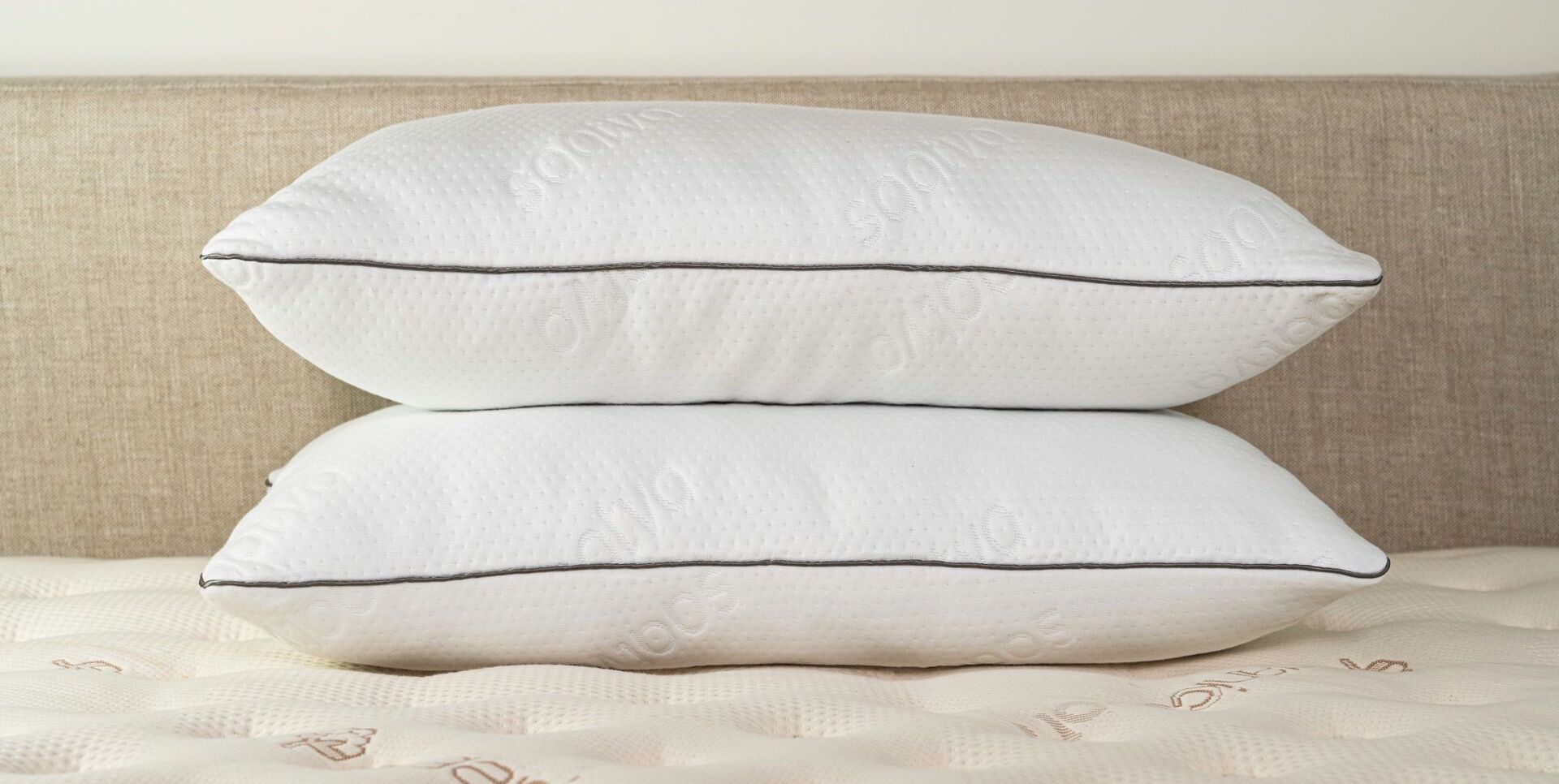
Cooling comfort and contouring support ideal for side sleepers
,
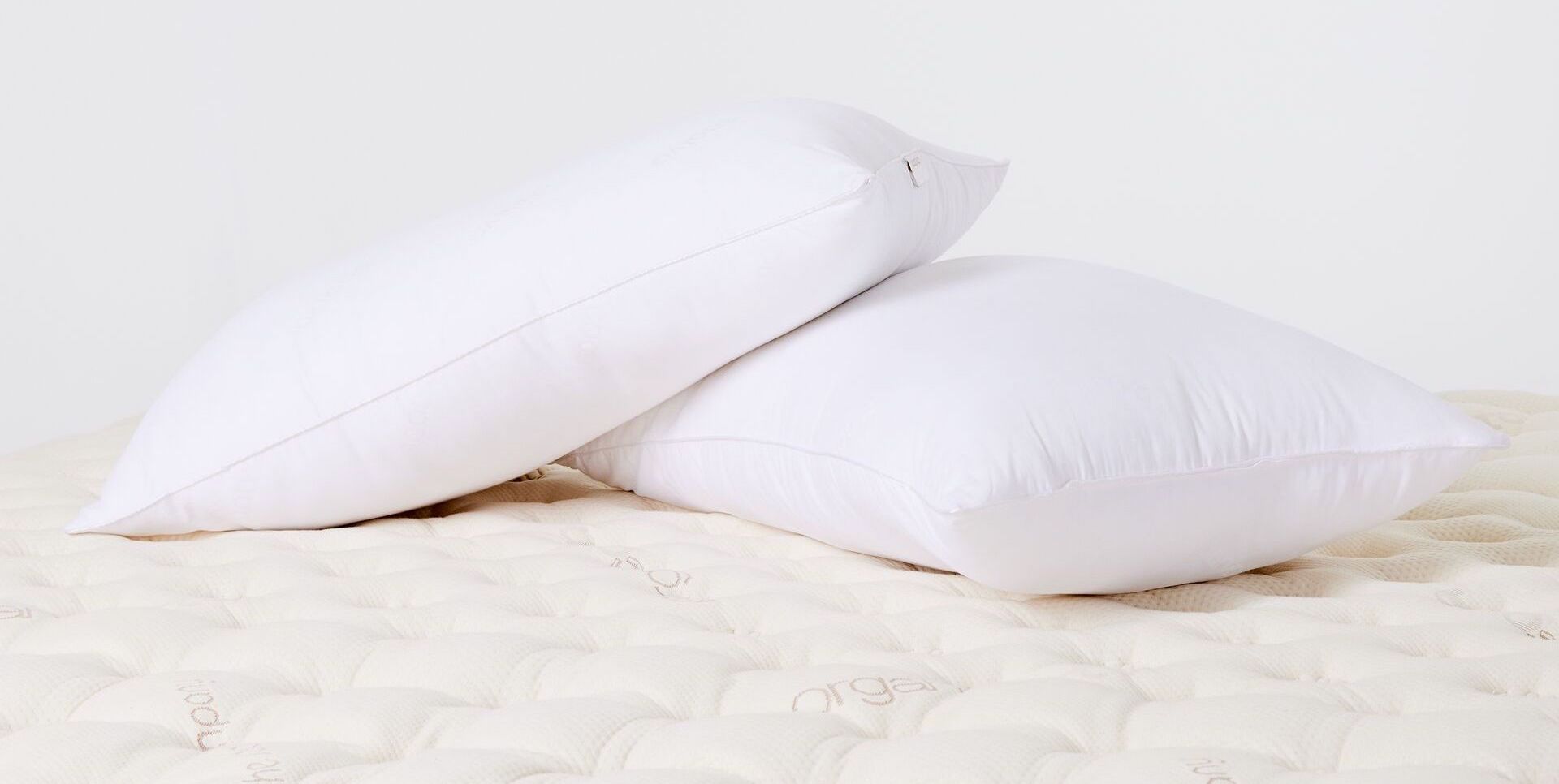
Hypoallergenic with a plush and airy feel that’s perfect for cuddling
, and
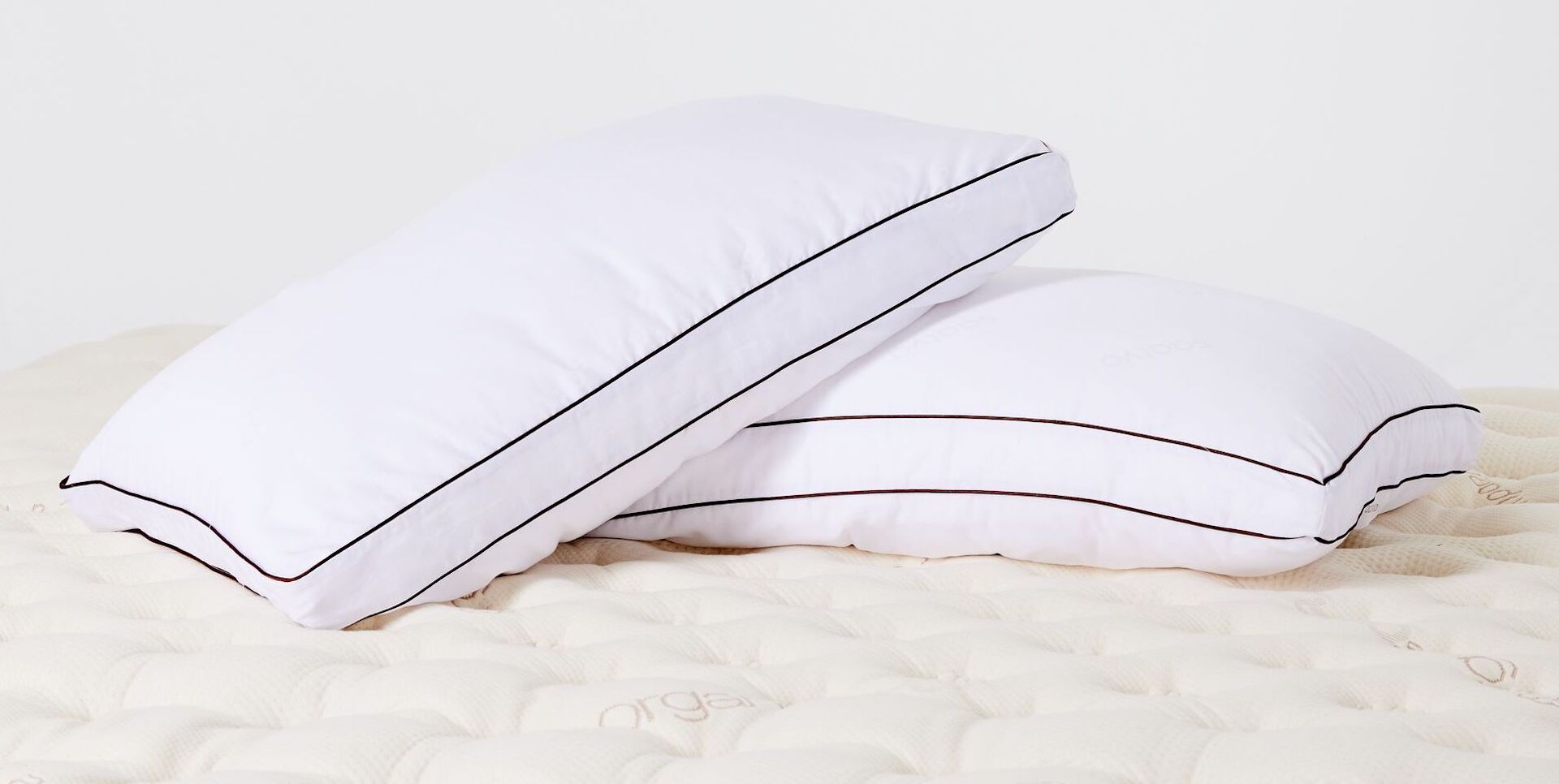
Hotel-quality comfort with responsive & ultra-breathable support
so you can fall asleep faster and stay asleep longer. Plus, see how Saatva pillows compare to competitors and learn the difference.


